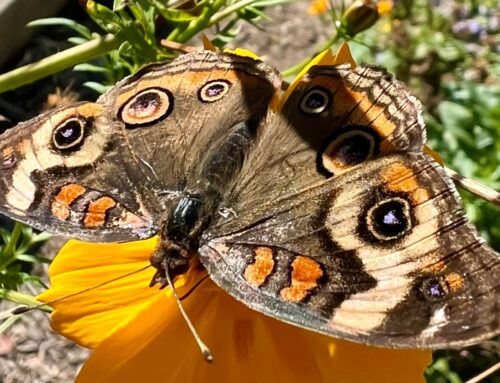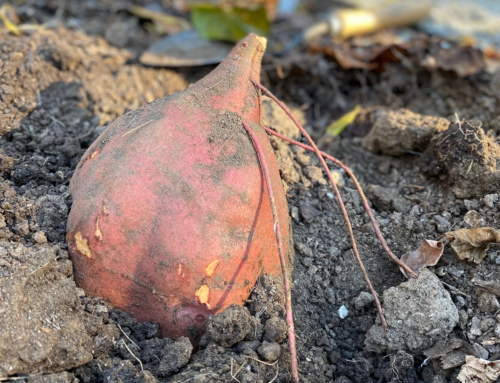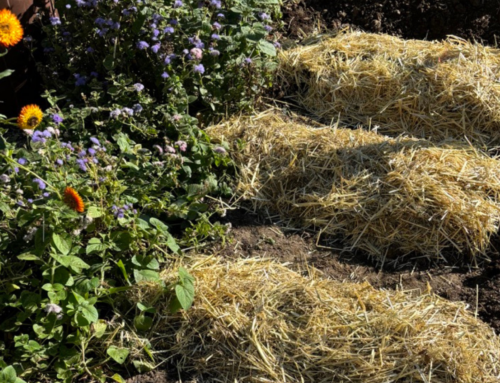PA Master Naturalist’s Notebook: July 8, 2024
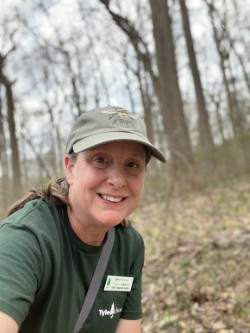
As the Program and Tour Coordinator at Tyler Arboretum, every week I look forward to preparing my weekly report for our volunteer educators.
I draw upon my training as a PA Master Naturalist to highlight the plants, insects, animals and other natural phenomena I’ve recently observed on Tyler’s grounds. I include photos (and some videos) along with educational tidbits our volunteers can share with our visitors.
My colleagues have encouraged me to compile my weekly reports into a biweekly blog for you. Here’s what caught my attention at Tyler Arboretum for the week of July 8, 2024. I’d love to hear from you about your observations too! Please email me anytime at tmallon@tylerarboretum.org.
Report: July 8, 2024
We are seeing fewer insects this season, possibly due to the heat and dry conditions. The robin’s nest on the back porch of Stone House is occupied again! The mother has been sitting on the nest for long periods, so there are likely eggs.
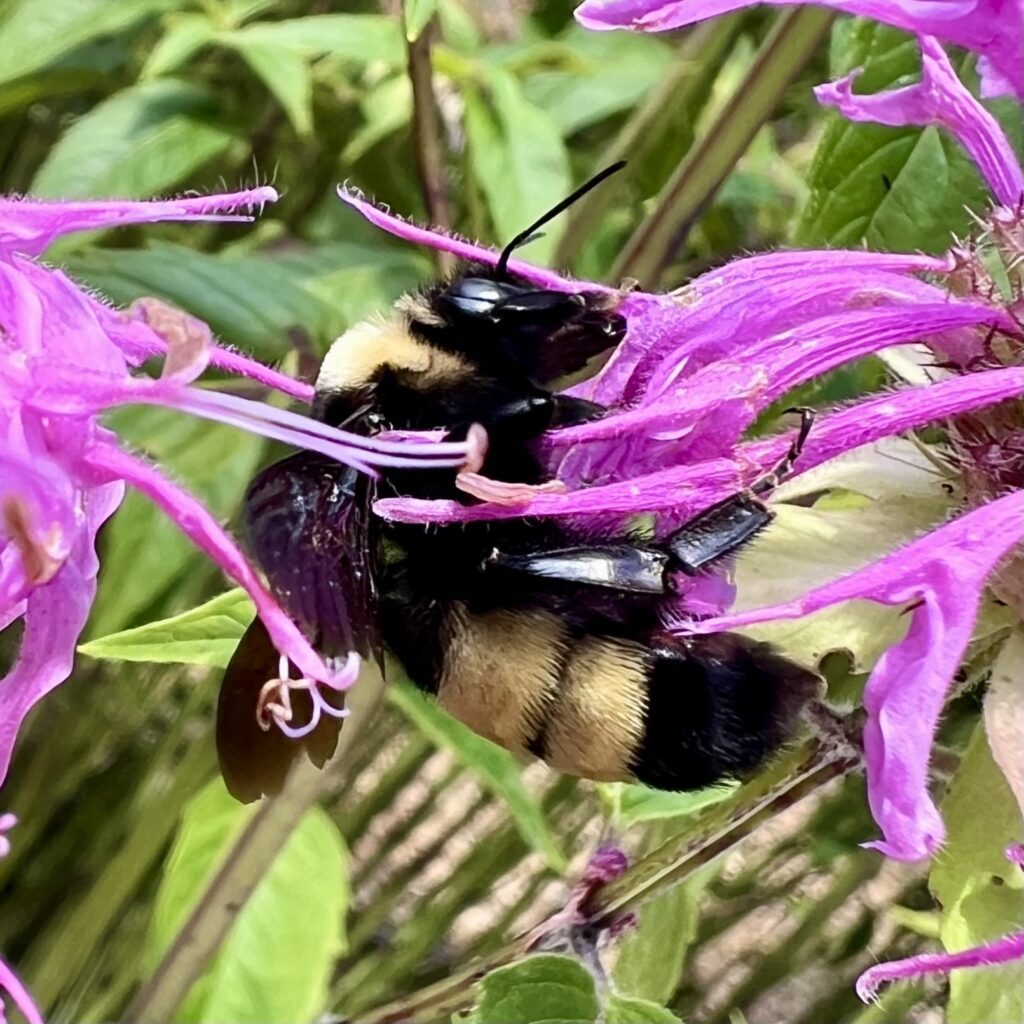
Black and gold bumble bee (Bombus auricomus)
I observed this large bee nectaring on bee balm in the Pollinator Preserve over several days. These bees live in small colonies, typically consisting of about 35 members. Like other bumble bees, the queen emerges first and establishes the nest, often in an abandoned rodent burrow. Workers and males emerge later and are active late July through August. Once workers emerge, the queen will stay in the nest. This bee was very fast, so I filmed in slow motion; you can hear the beat of her wings in the video below!!
Location: Pollinator Preserve.
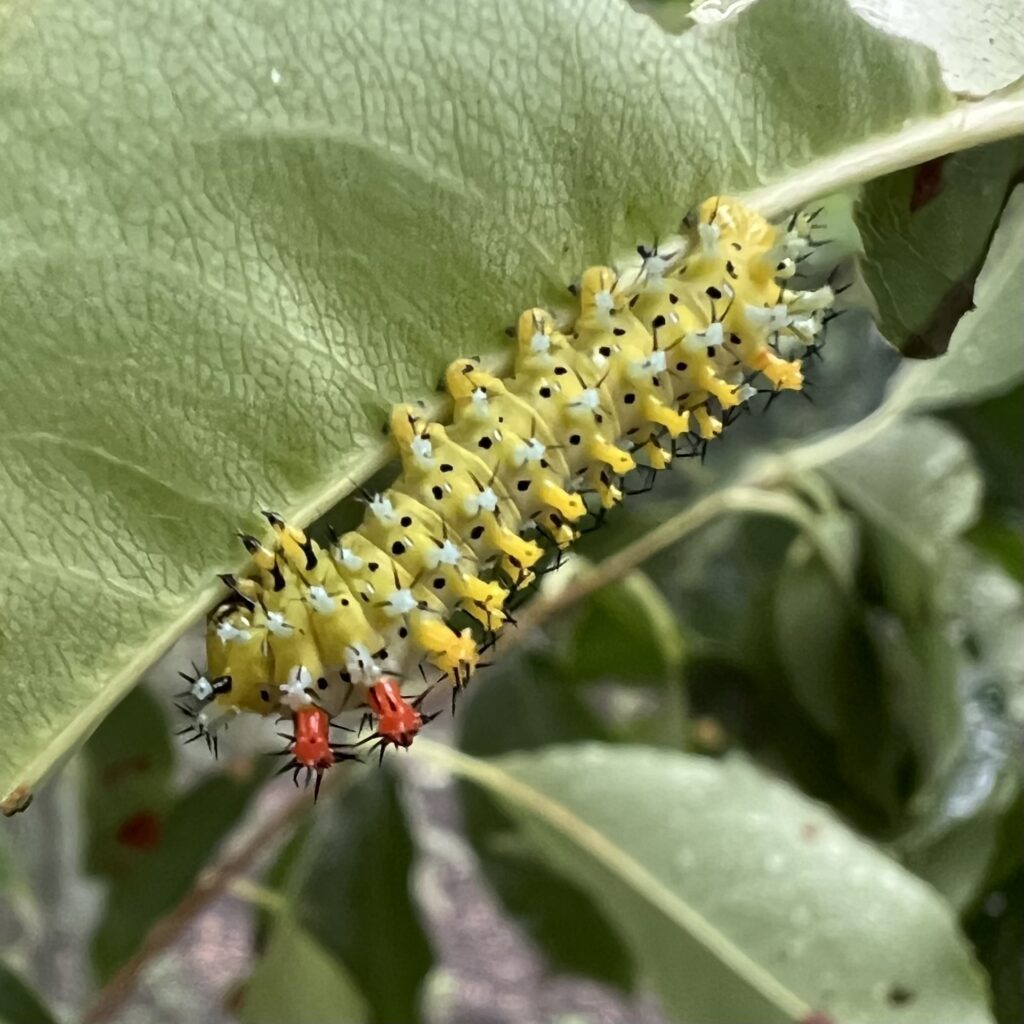
Cecropia caterpillar (Hyalophora cecropia)
Look closely to find these caterpillars on the cherry leaves in the rearing cage. They are not poisonous, but their spikey appearance and bright coloration deters birds. They will grow to nearly 5” long and as thick as your thumb before spinning a cocoon in September. In a few weeks, when the caterpillars are larger, you will be able to hear them chewing if you put your ear near the rearing cage!
Location: Pollinator Preserve, rearing cage.
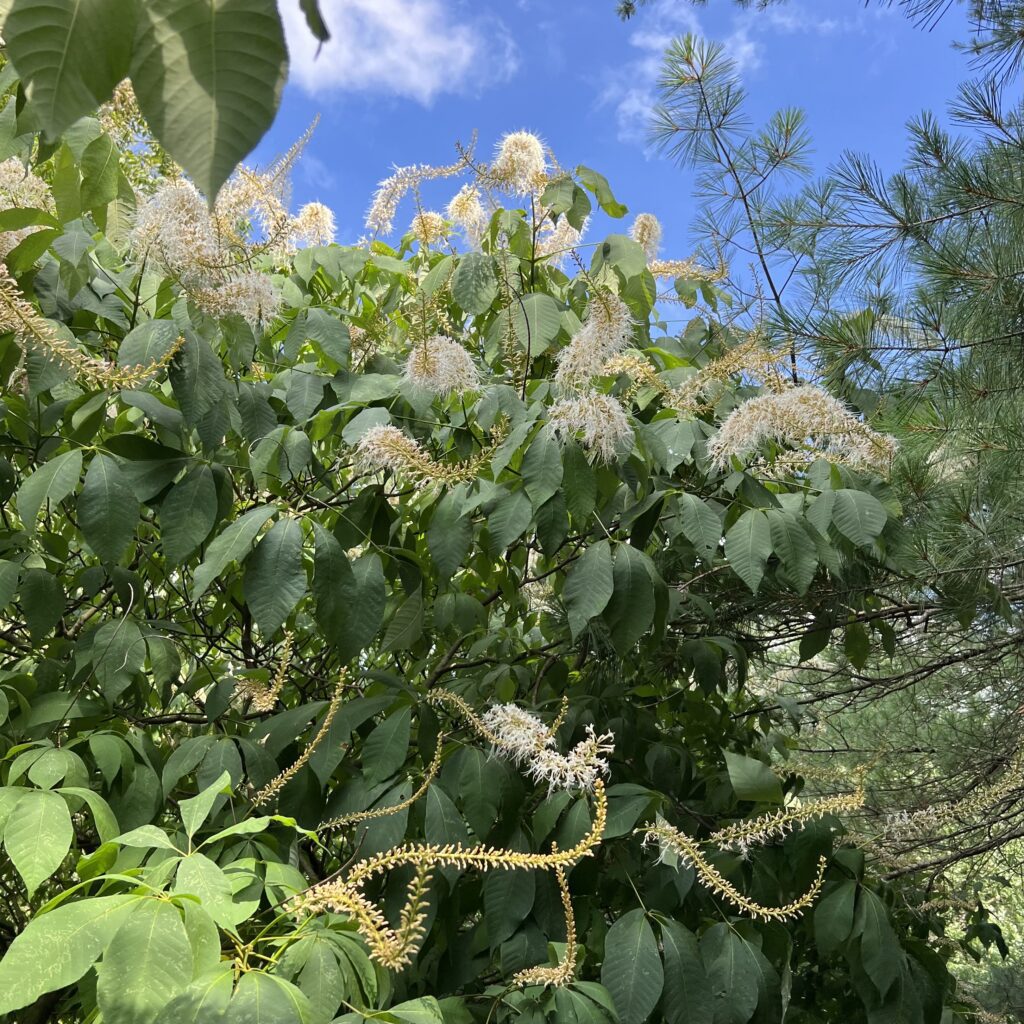
Bottlebrush buckeye
Location: Scenic Loop near Pond Bridge.
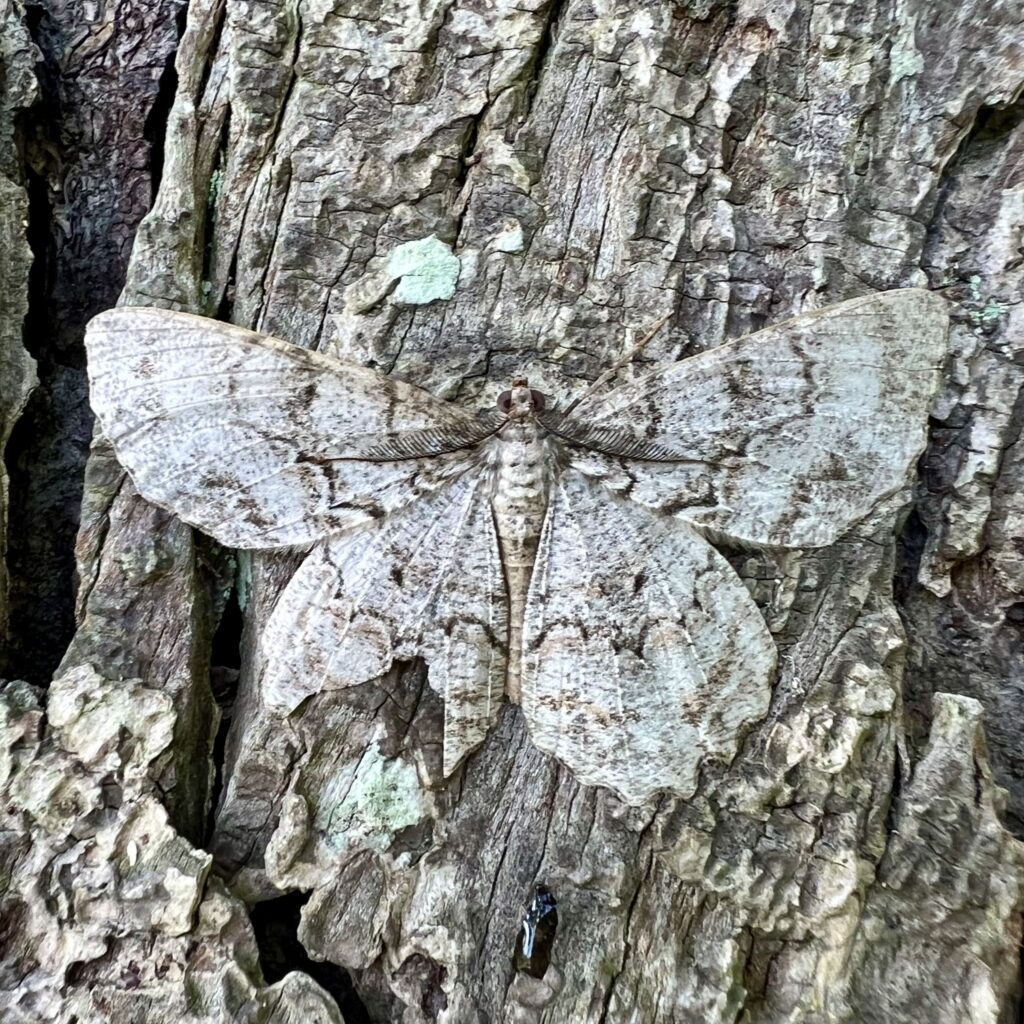
Tulip tree beauty (Epimecis hortaria)
I spotted this well-camouflaged moth on the shagbark hickory near Lucille’s Garden. The break in the pattern caused by its torn wing caught my eye. The caterpillars of this species feed on the leaves of paw-paw, sassafras and tulip trees. Most moths are nocturnal, and this one was likely resting until nightfall. Interestingly, scientists have discovered that nocturnal insects are not attracted to artificial light as theorized, but are disoriented by it. Night-flying insects orient themselves by keeping their backs to the brightest light. This works fine when the brightest light in the sky is the moon and stars. Artificial lights cause the insects to get trapped in a disorienting flight pattern. You can read about the study here. And learn what you can do to prevent light pollution here.
Location: Near Lucille’s Garden.
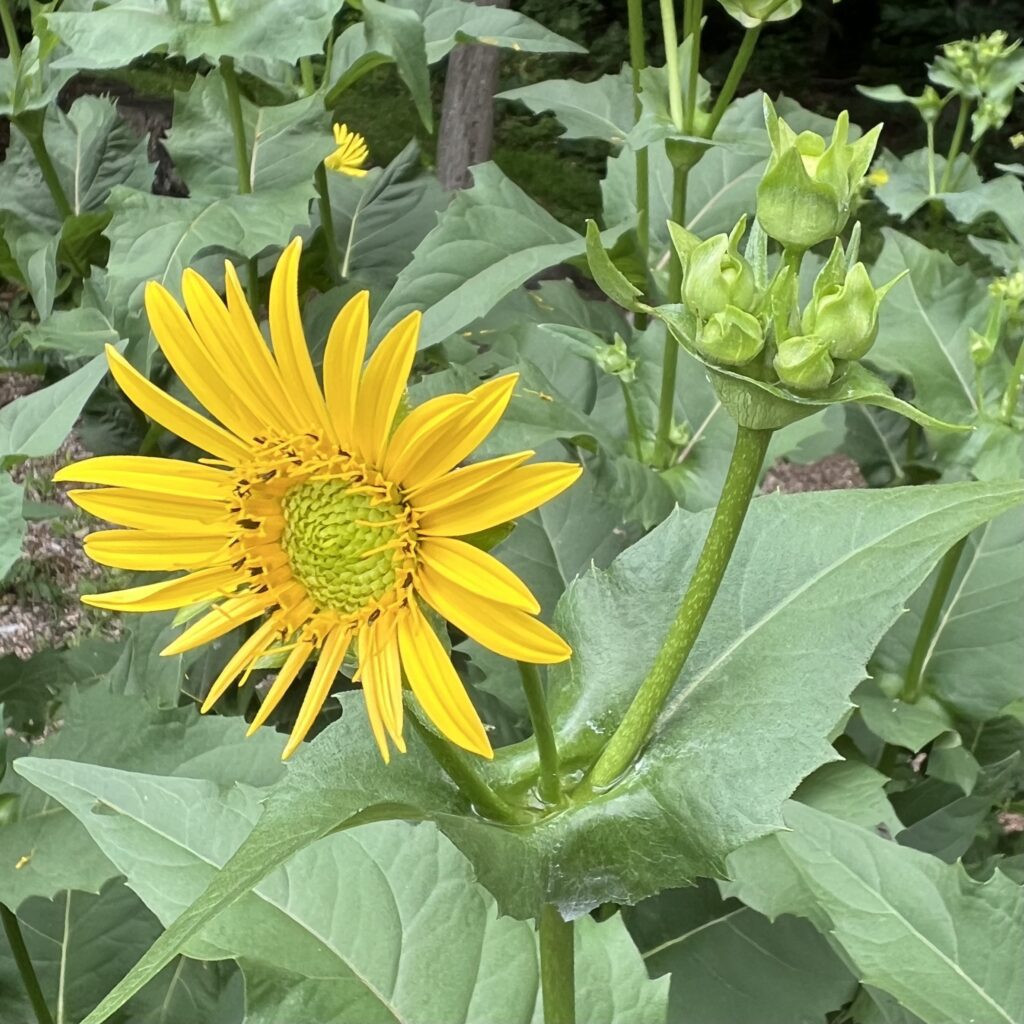
Cup plant (Silphium perfoliatum)
This tall native plant provides insects and birds with food, water and shelter. Insects collect nectar and pollen, while songbirds eat the seeds. The leaves form a small cup around the stem that collects rainwater. Birds, insects and small animals drink the water. This plant can spread enthusiastically in a garden setting but is excellent if you have a large damp area.
Location: Lucille’s Garden, behind the vegetable garden.


